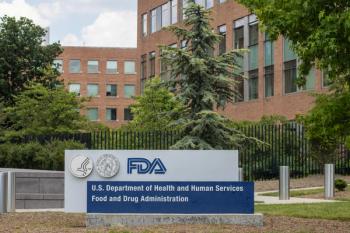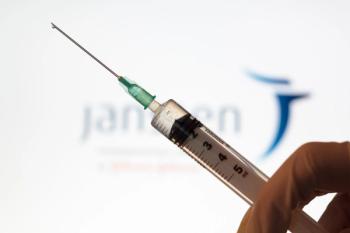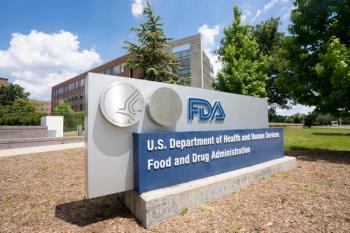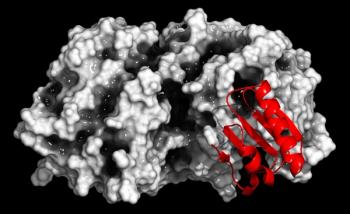
FDA Approves Sevabertinib for HER2-Mutant Non-Small Cell Lung Cancer
Key Takeaways
- Sevabertinib received FDA accelerated approval for NSCLC with HER2 TKD mutations, with the Oncomine Dx Target test as a companion diagnostic.
- Clinical trials showed a 71% ORR and 9.2-month median DOR in patients naive to HER2-targeting therapies.
The FDA accelerates approval of sevabertinib for advanced non–small cell lung cancer, showcasing promising efficacy and manageable safety in clinical trials.
The FDA has granted accelerated approval to sevabertinib (Hyrnuo; Bayer HealthCare) for adults with locally advanced or metastatic nonsquamous non–small cell lung cancer (NSCLC) whose tumors feature HER2 tyrosine kinase domain (TKD) activating mutations—as detected by an FDA-cleared test—and who have received prior systemic therapy.1
Accordingly, the FDA approved the Oncomine Dx Target test (Life Technologies Corporation) for use as a companion diagnostic device to help detect HER2 TKD activating mutations in patients with nonsquamous NSCLC who may be eligible for sevabertinib administration. The approvals were announced in a news release by the FDA.1
Data Submitted to FDA Highlight Sevabertinib's ORR, DOR
The efficacy and safety of sevabertinib were established in a clinical trial based on SOHO-01 (NCT05099172), an open-label, single-arm, multicenter, multi-cohort study. Patients with unresectable or metastatic, non-squamous NSCLC with HER2 TKD-activating mutations who had received sevabertinib in SOHO-O1 were examined. HER2-activating mutations were confirmed in tumor tissue or plasma prior to enrollment. Major efficacy outcomes included objective response rate (ORR) and duration of response (DOR), which were assessed by blinded independent central review.1,2
Across 70 patients with locally advanced or metastatic NSCLC with HER2 TKD activating mutations who had received prior systemic therapy but were naïve to HER2-targeting therapies, ORR was 71% (95% CI, 59%–82%). Median DOR was 9.2 months (95% CI, 6.3–15.0), with 54% of responding patients demonstrating a DOR of 6 months or longer.1
For the 52 patients with locally advanced or metastatic NSCLC with HER2 TKD-activating mutations who had previously received prior systemic therapy—including HER2-targeted antibody drug conjugates—ORR was 38%. Median DOR was 7.0 months (95% CI, 5.6–not evaluable), whereas 60% of responding patients had a DOR of 6 months or longer.1
SOHO-01 Showcases Manageable Safety, Efficacy With Sevabertinib
In SOHO-01, an ongoing phase 1/2 clinical trial, sevabertinib demonstrated manageable safety and similar responses between pretreated and treatment-naïve patients.3
Enrollees were separated into 2 cohorts. In the expansion/extension cohort D, patients had disease progression following 1 or more systemic therapies and were naive to HER2-targeted therapy. In cohort F, patients had not received any systemic therapy for locally advanced or metastatic disease. The primary end point was safety, while a key secondary end point was antitumor activity.3
As of October 2024, 81 (cohort D) and 39 (cohort F) patients were treated. Treatment-related adverse events (TRAEs) were observed in approximately 96.7% of patients; diarrhea was the most common TRAE, leading to a dose reduction in 8.3% of patients. However, no patients discontinued treatment due to diarrhea, and there were no cases of interstitial lung disease reported, key markers of sevabertinib's efficacy.3
Efficacy was positive in each cohort. Investigator-assessed ORR was 59.3% (95% CI, 47.8–70.1) in cohort D and 59.0% (95% CI, 42.1–74.4) in cohort 4. Furthermore, disease control rates—defined as having a confirmed response or stable disease for 12 weeks or more—were about 84.0% (95% CI, 74.1–91.2) in cohort D and 84.6% (95% CI, 69.5–94.1) in cohort F. There was 1 patient in cohort D who achieved a complete response.3
The FDA recommends a dosage of 20 mg orally twice daily with food for sevabertinib until disease progression or unacceptable toxicity. The prescribing information for sevabertinib features warnings for diarrhea, interstitial lung disease, ocular toxicity, and pancreatic enzyme elevation. Pharmacists should monitor patients being administered sevabertinib for these reactions and adjust or discontinue treatment as needed.
REFERENCES
1. FDA grants accelerated approval to sevabertinib for non-squamous non-small cell lung cancer. News Release. FDA Center for Drug Evaluation and Research. Released November 19, 2025. Accessed November 19, 2025. https://www.fda.gov/drugs/resources-information-approved-drugs/fda-grants-accelerated-approval-sevabertinib-non-squamous-non-small-cell-lung-cancer?utm_medium=email&utm_source=govdelivery
2. First in human study of BAY2927088 in participants who have advanced non-small cell lung cancer (NSCLC) with mutations in the genes of epidermal growth factor (EGFR) and/or human epidermal growth factor receptor 2 (HER2). ClinicalTrials.gov Identifier: NCT05099172. Last Updated November 12, 2025. Accessed November 19, 2025. https://clinicaltrials.gov/study/NCT05099172
3. Loong HH, Li Lin, Wu Lin, et al. SOHO-01: Safety and efficacy of BAY 2927088 in patients with advanced HER2-mutant non-small cell lung cancer (NSCLC) who were pretreated but naïve to HER2-targeted therapy or had not received any treatment for advanced disease. J Clin Oncol. 2025;43(16):8504. doi:10.1200/JCO.2025.43.16_suppl.8504
Newsletter
Stay informed on drug updates, treatment guidelines, and pharmacy practice trends—subscribe to Pharmacy Times for weekly clinical insights.















































































































































































































